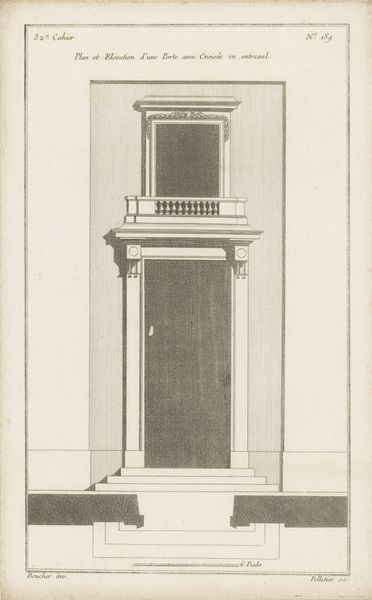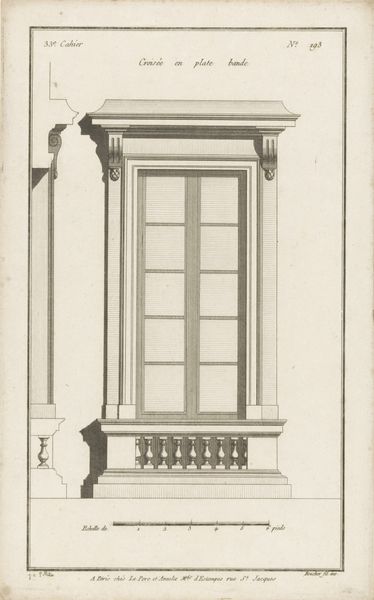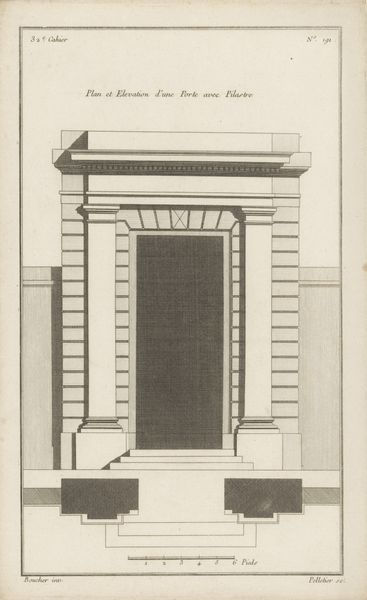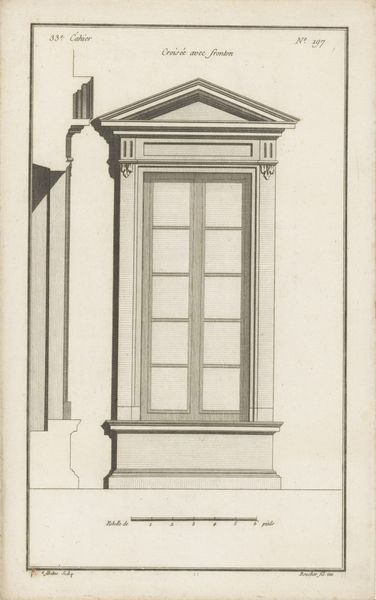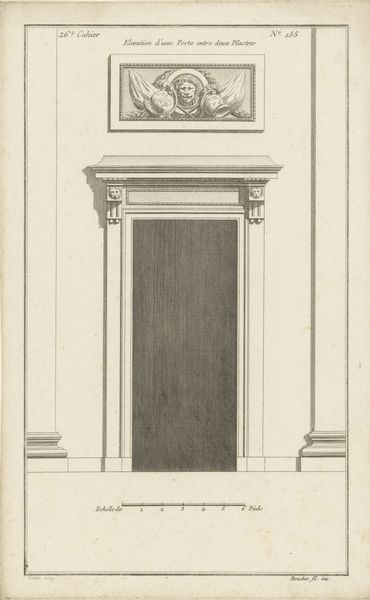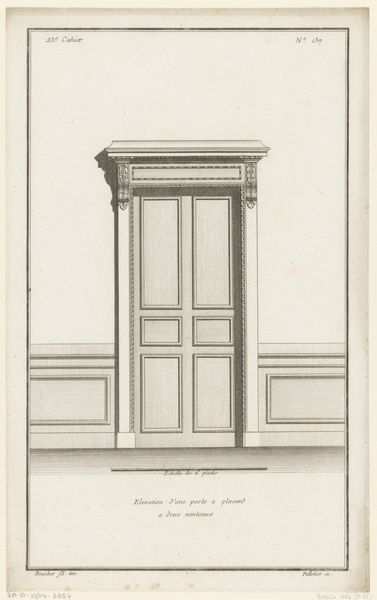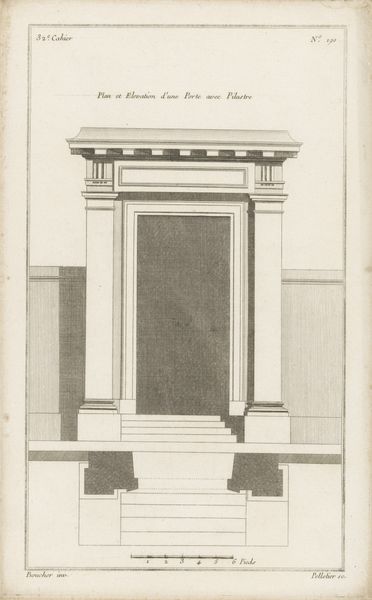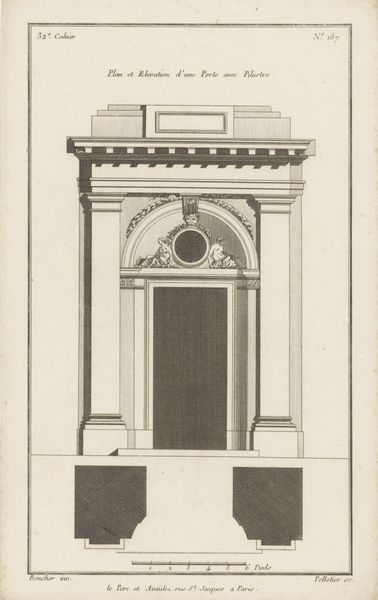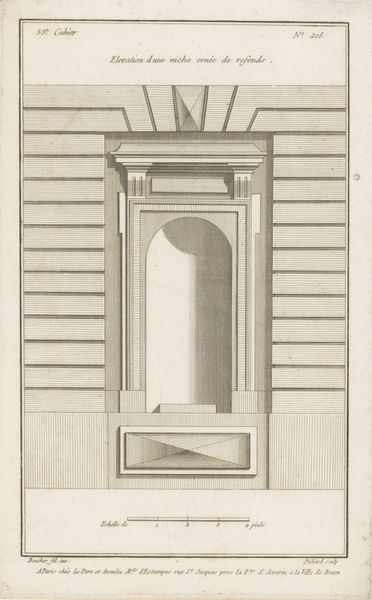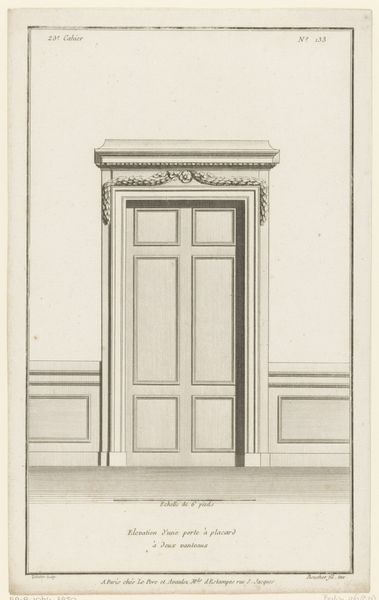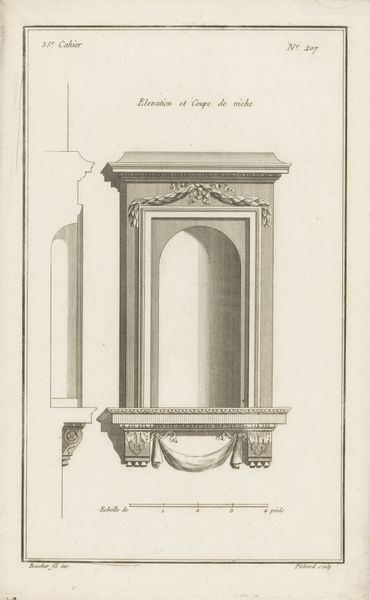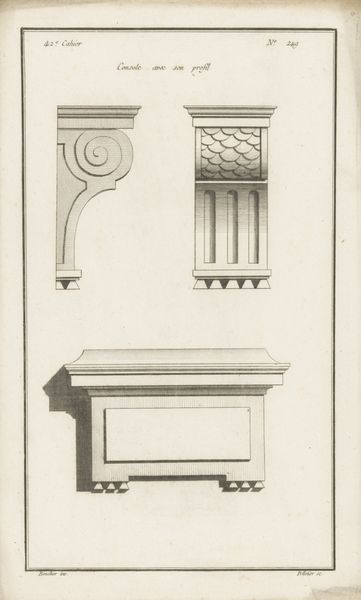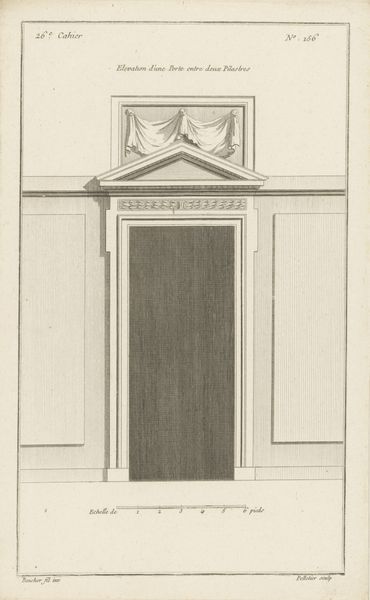
drawing, print, engraving, architecture
drawing
neoclacissism
geometric
line
cityscape
history-painting
academic-art
engraving
architecture
realism
Dimensions: height 329 mm, width 202 mm
Copyright: Rijks Museum: Open Domain
Jean Pelletier created 'Venster met keldergat,' or 'Window with basement hole', as an etching. The image would have been produced by coating a metal plate with wax, and then using a sharp tool to draw through the wax, exposing the metal. The plate was then submerged in acid, which bit into the exposed lines, creating grooves that would hold ink. Etchings like this were a form of proto-industrial image-making. They allowed for the relatively quick production of detailed architectural drawings. The crisp lines and precise rendering speak to a culture increasingly interested in standardization and mass production. Consider the labor involved: from the mining of the metal for the plate, to the skilled hand of the draftsman, to the printing process itself. This image, like the architecture it depicts, is the result of many hands, each contributing to the final product. By attending to the material process, we can appreciate how even a seemingly simple image is deeply intertwined with the social and economic forces of its time.
Comments
No comments
Be the first to comment and join the conversation on the ultimate creative platform.
